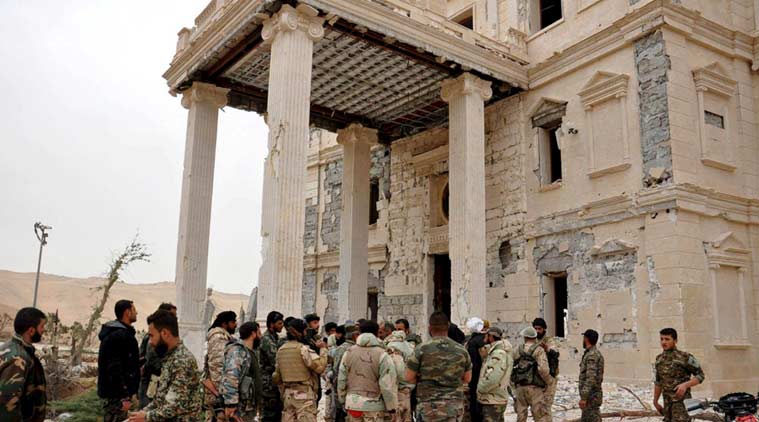Opinion Palmyra regained
The town’s destruction is humanity’s loss. Its recapture is a major blow to the Islamic State.

 Syria’s head of antiquities and museums said that a technical team has returned to Damascus after a two-day work in Palmyra. Picture provided by SANA on March 24, 2016. (Source: Reuters)
Syria’s head of antiquities and museums said that a technical team has returned to Damascus after a two-day work in Palmyra. Picture provided by SANA on March 24, 2016. (Source: Reuters)
While the retaking of Palmyra by the Syrian army is a major blow to the Islamic State (IS), the irony of this turnaround will not be lost on the international community. The air strikes led by the US incrementally weakened the IS. But they couldn’t prevent the jihadists’ march to Palmyra last May and the subsequent destruction of the Unesco World Heritage Site, including the Temple of Baalshamin and the Temple of Bel — the latter being Palmyra’s most prized archaeological wonder. The irony is that this recapture of Palmyra was enabled by Russia, whose military intervention allowed the Bashar al-Assad regime to regroup and lead the ongoing assault that may yet defeat the IS in Syria — if successful campaigns can, hereafter, be launched against its strongholds in Raqqa and Deir Ezzor.
The Syrian authorities had managed to rescue 400-plus artefacts before Palmyra fell to the IS, but the bigger statues and monuments couldn’t, of course, be moved. Last August, Khaled al-Assad, the site’s 81-year-old director, was executed by the IS for refusing to reveal where smaller artefacts had been hidden. On Monday, antiquities experts were left in shock as the full extent of the damage to Palmyra began to unfold. A full estimate is still days away, but it appears that apart from famous structures, the IS also destroyed countless artefacts in the Palmyra museum and even dynamited its basement where hundreds of statues had been stored. Maamoun Abdul-Karim, the Syrian antiquities chief, has said it would take his department five years to restore the structures.
Hereafter, the West’s room for manoeuvre against Assad at the Geneva talks will shrink, perhaps delaying a political solution acceptable to all. At the same time, as IS territory shrinks, the militants may attempt more Paris- and Brussels-type attacks in Europe. Thus, Geneva notwithstanding, all sides need to cooperate and vanquish the IS first.




